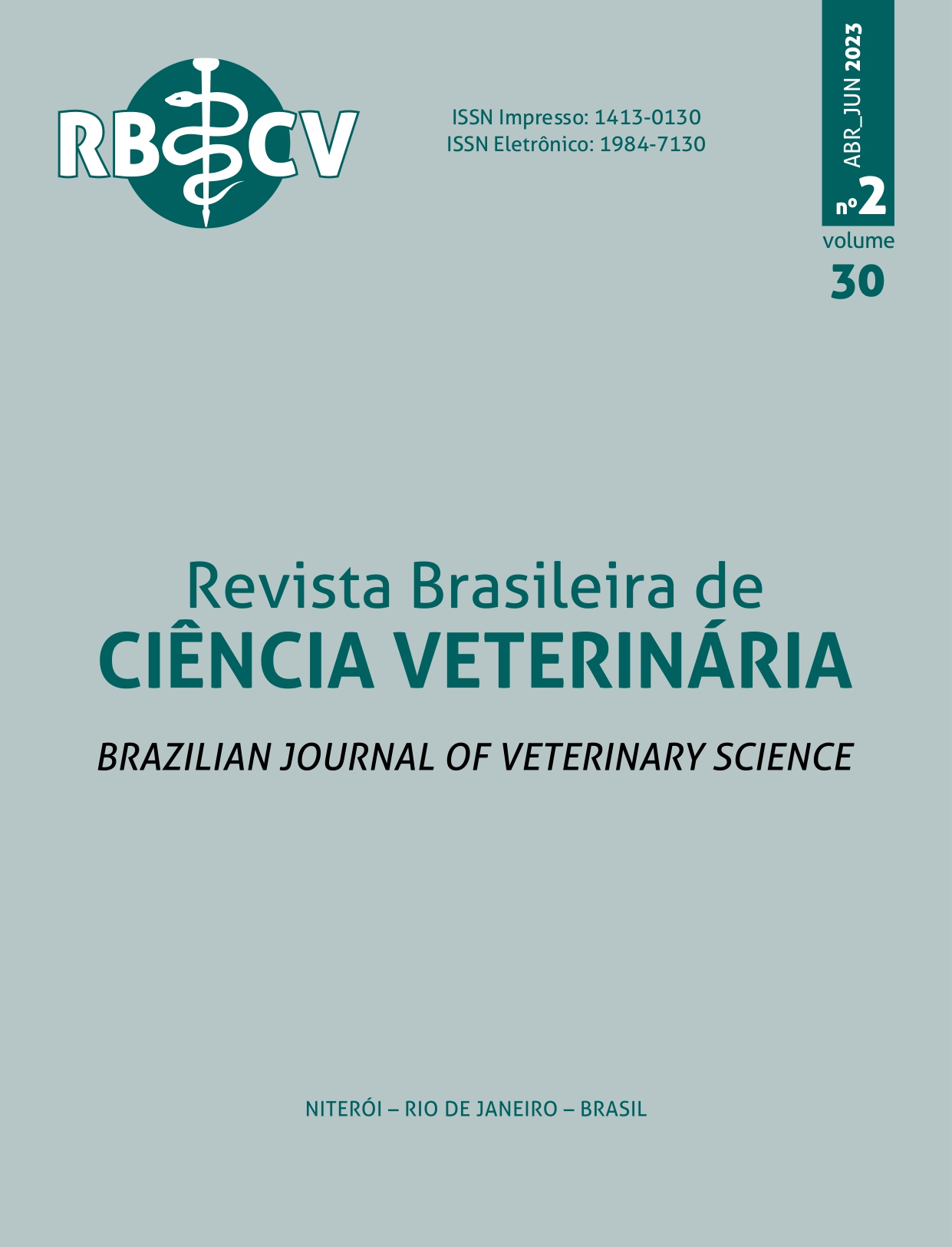.
.
Keywords:
traumatic hernia, pneumothorax, flail chest, chest traumaAbstract
Thoracic traumas are common in trauma patients and mainly include pulmonary contusion, pulmonary laceration, pneumothorax, hemothorax, rib and sternum fractures and diaphragmatic hernia. The main causes are car accidents, falls and bites. Tachypnea or dyspnea are possible clinical signs, associated with hypovolemic shock and gastrointestinal signs. Thoracic injuries may be overlooked when distracting injuries, such as limb fractures, are present. Thus, thorough clinical examination is mandatory and animals with respiratory failure may require stabilization and emergency surgery. Considering the importance of thoracic trauma in clinical practice, the manuscript aimed to report the case of spurious thoracic hernia associated with traumatic laceration of the caudal lung lobe in a bitch with severe dyspnea after car trauma. After an emergency evaluation and radiographic examinations, a flail chest, rib fractures, pulmonary contusion and severe pneumothorax were diagnosed. After clinical stabilization, surgical treatment was performed to stabilize the flail chest. During surgery, herniation and laceration of the left caudal lobe of the lung were observed, and sutures were performed to correct the pulmonary laceration and stabilize the rib cage, in addition to thoracostomy to control the pneumothorax. In cases of flail chest and lobar entrapment, surgical treatment is essential, as in this case, with the aim of repairing and repositioning the pulmonary lobe and stabilizing the flail chest. Traumatic pulmonary herniation is a possible differential diagnosis in post-traumatic flail chest, as well as repairing the lobe and stabilizing the ribs using sutures are effective surgical treatment techniques.


